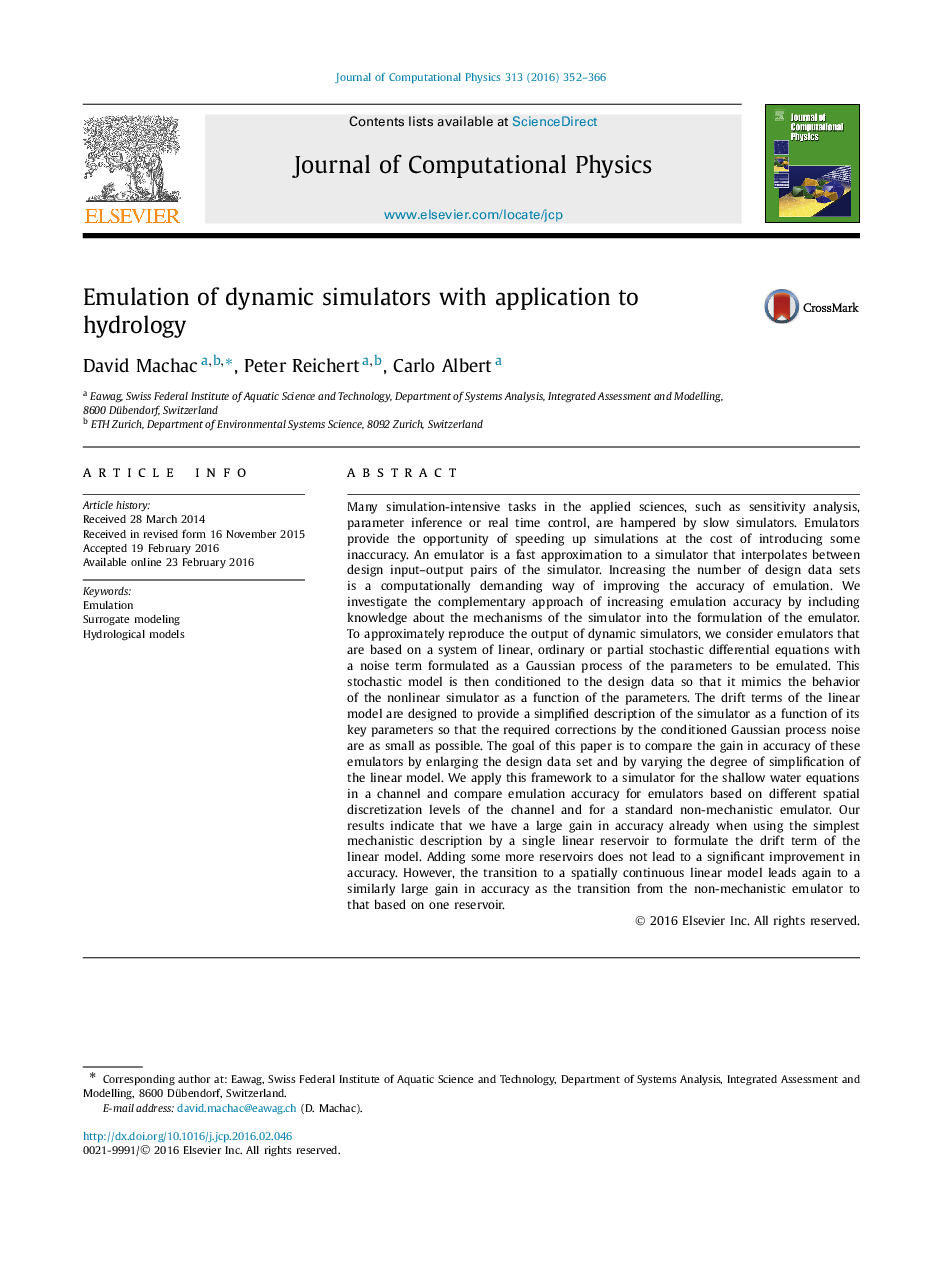| کد مقاله | کد نشریه | سال انتشار | مقاله انگلیسی | نسخه تمام متن |
|---|---|---|---|---|
| 519567 | 867672 | 2016 | 15 صفحه PDF | دانلود رایگان |
Many simulation-intensive tasks in the applied sciences, such as sensitivity analysis, parameter inference or real time control, are hampered by slow simulators. Emulators provide the opportunity of speeding up simulations at the cost of introducing some inaccuracy. An emulator is a fast approximation to a simulator that interpolates between design input–output pairs of the simulator. Increasing the number of design data sets is a computationally demanding way of improving the accuracy of emulation. We investigate the complementary approach of increasing emulation accuracy by including knowledge about the mechanisms of the simulator into the formulation of the emulator. To approximately reproduce the output of dynamic simulators, we consider emulators that are based on a system of linear, ordinary or partial stochastic differential equations with a noise term formulated as a Gaussian process of the parameters to be emulated. This stochastic model is then conditioned to the design data so that it mimics the behavior of the nonlinear simulator as a function of the parameters. The drift terms of the linear model are designed to provide a simplified description of the simulator as a function of its key parameters so that the required corrections by the conditioned Gaussian process noise are as small as possible. The goal of this paper is to compare the gain in accuracy of these emulators by enlarging the design data set and by varying the degree of simplification of the linear model. We apply this framework to a simulator for the shallow water equations in a channel and compare emulation accuracy for emulators based on different spatial discretization levels of the channel and for a standard non-mechanistic emulator. Our results indicate that we have a large gain in accuracy already when using the simplest mechanistic description by a single linear reservoir to formulate the drift term of the linear model. Adding some more reservoirs does not lead to a significant improvement in accuracy. However, the transition to a spatially continuous linear model leads again to a similarly large gain in accuracy as the transition from the non-mechanistic emulator to that based on one reservoir.
Journal: Journal of Computational Physics - Volume 313, 15 May 2016, Pages 352–366
